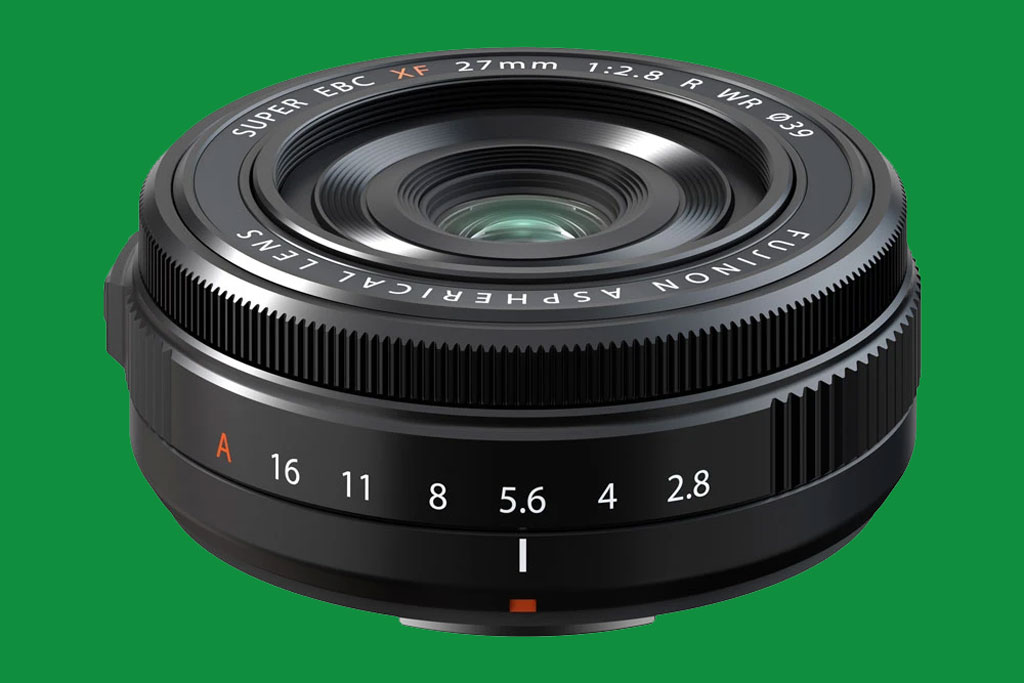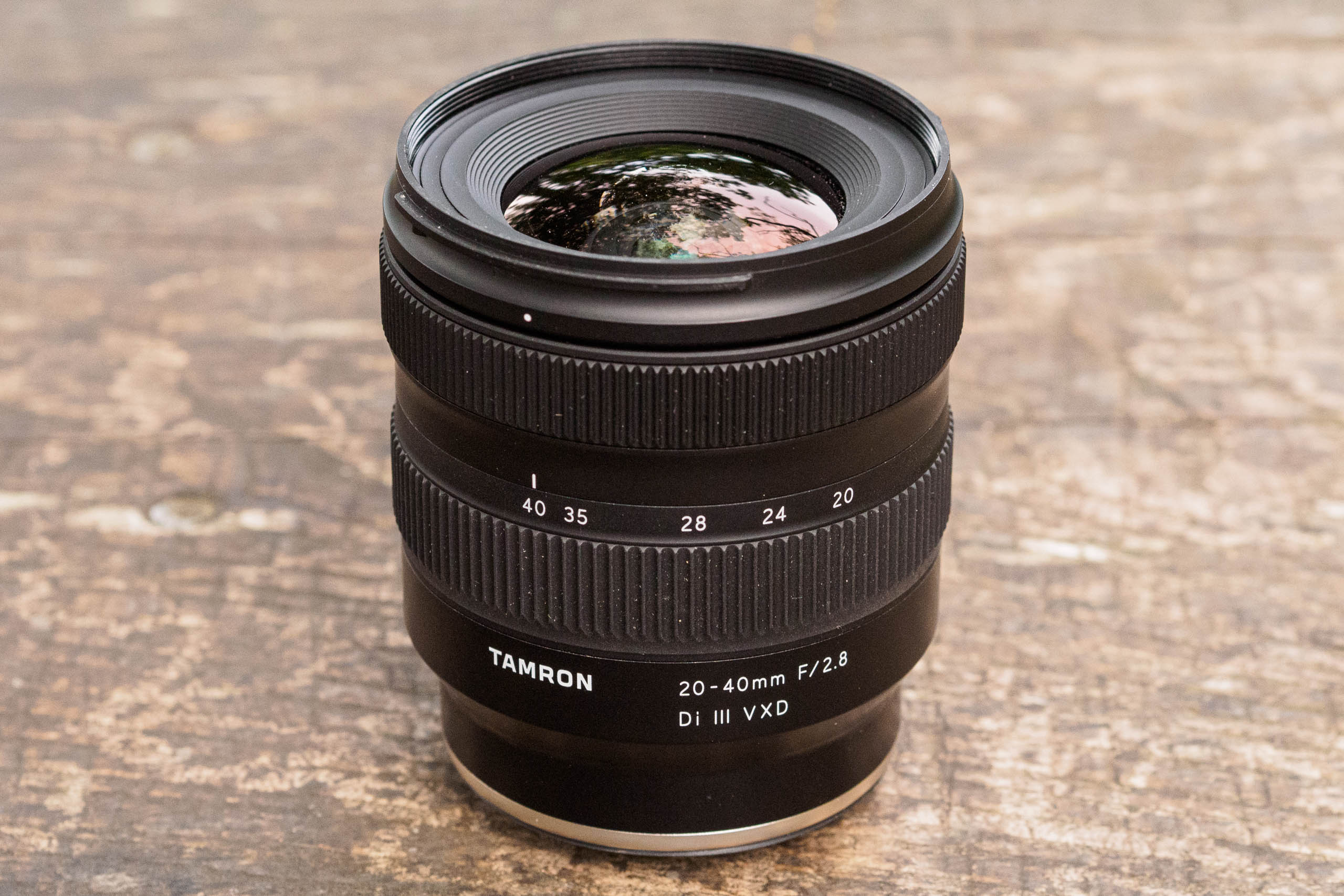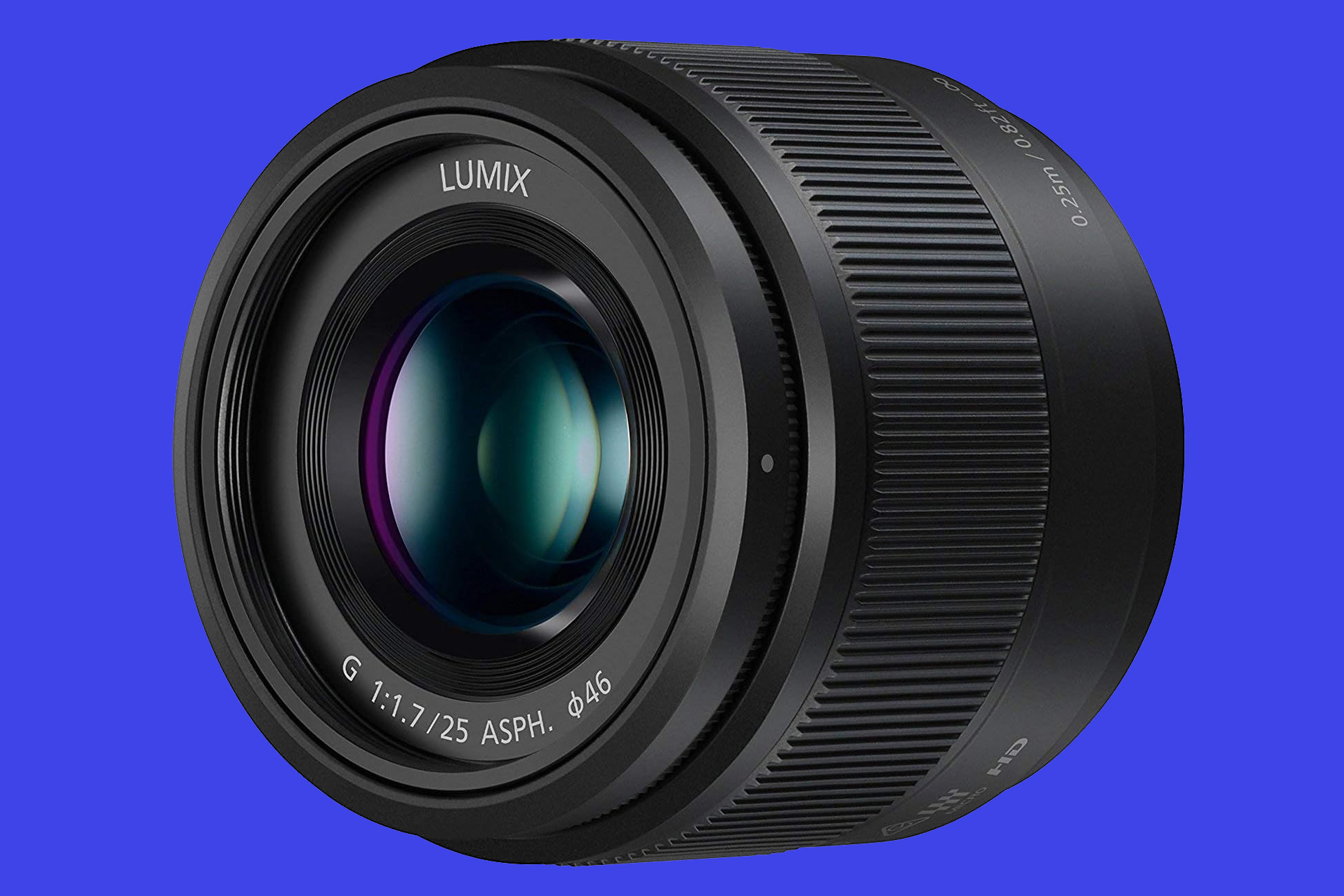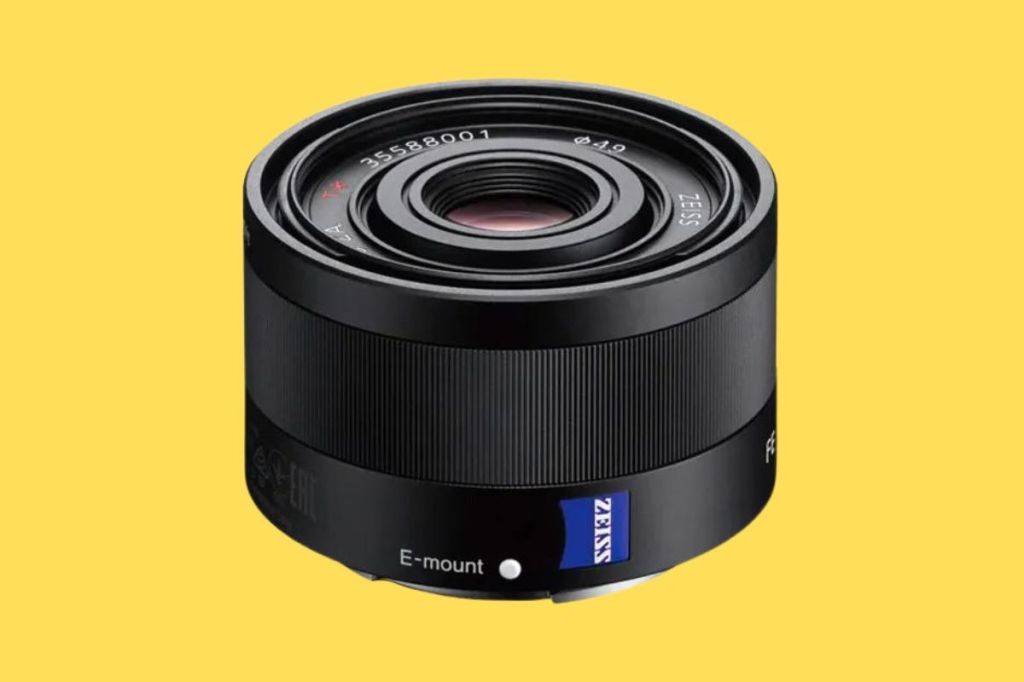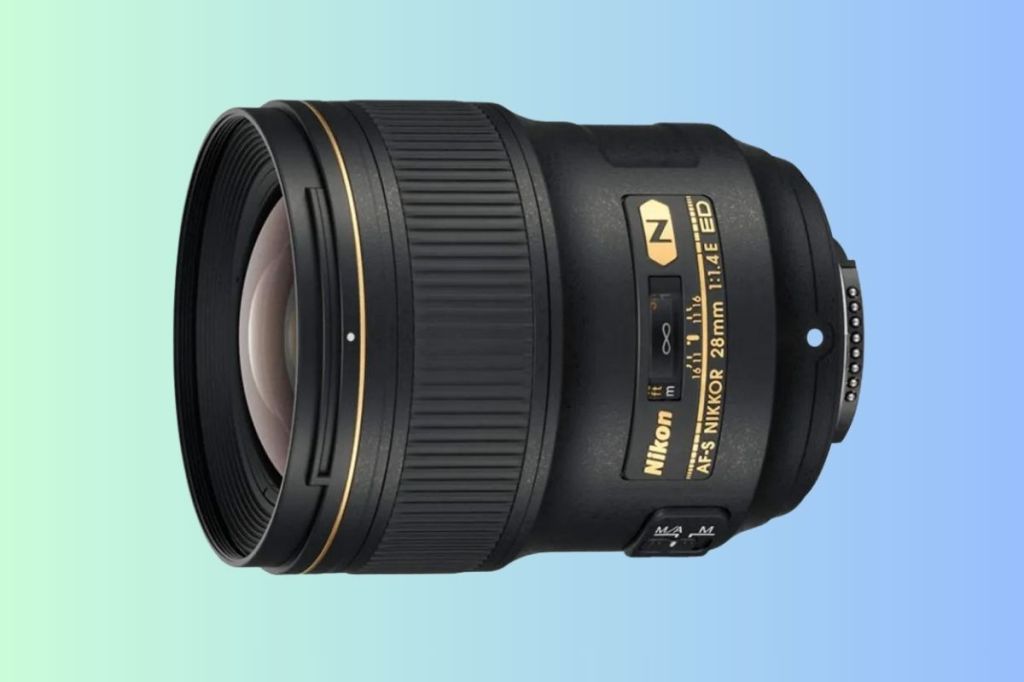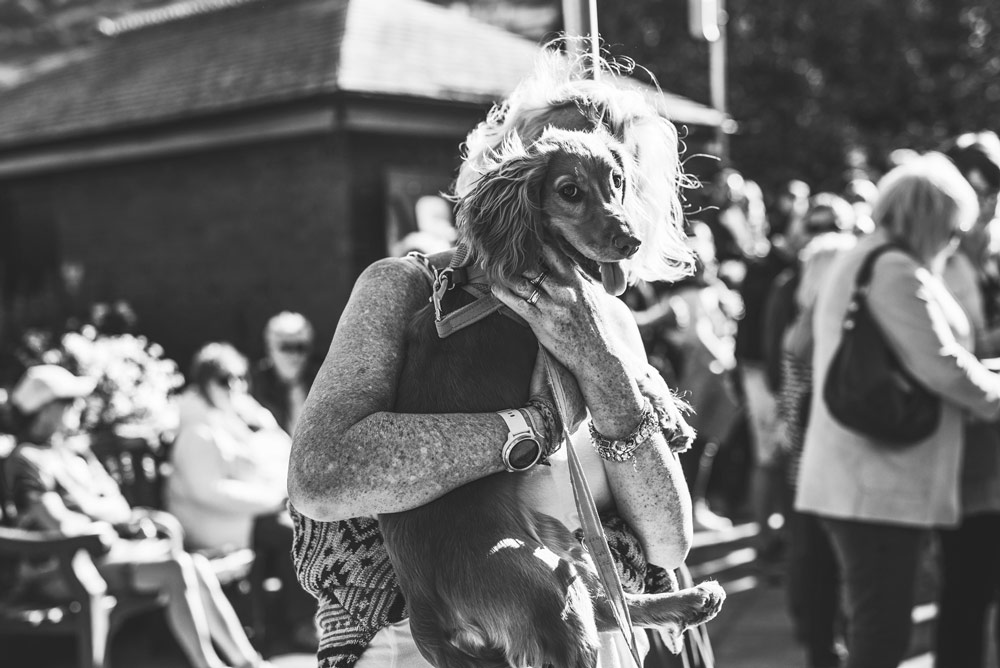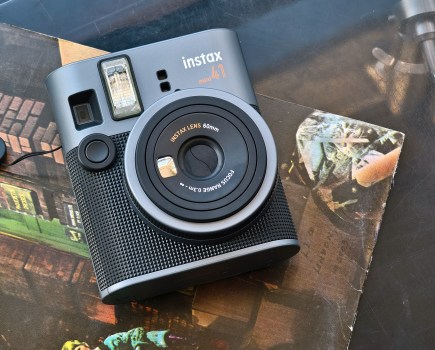Ask three photographers to recommend the best lens for street photography and you’ll likely get three different answers. Some swear by a 50mm, while others will recommend a documentary-style 35mm, or a wide 24mm to pair with your photography camera. Others might ask “Why not all three?” and suggest a zoom lens.
Without doubt, street photography inspires different approaches. Accordingly, this guide presents an array of optical options for shooting urban scenes; to get you thinking about the right lens for you and your street photography.
With this in mind, we cover a selection of focal lengths, with mirrorless and DSLR lens options for all the major mounts in use. We’ve used the findings of our extensive lens testing and reviewing experience to inform our choices – to learn more about how we picked the lenses on this list, scroll to the bottom of the page where there is a short explainer of the factors that make a good street photography lens.
Street photography is all about being observant, and reacting quickly. Our selection of lenses will help you achieve just that. If you’re starting from scratch with your street-shooting setup, check out our guide to the best street photography cameras. For monochrome lovers, we also have a guide to black & white street photography.
The best street photography lenses: our quick list
Looking for the best deal on lenses for street photography? Not only will you find the best lenses for urban shoots, but also some of the best deals, as our ‘Buy now’ buttons are setup to automatically take you to the best prices from trusted retailers. There is also a list of other retailers below each camera, so you can find the right deal for you.
Best street photography lenses for mirrorless cameras:
- Best street photography lens for Nikon Z: Nikon NIKKOR Z 35mm f/1.8 S – buy now
- Best street photography lens for Sony FE: Sony FE 24mm f/1.4 GM – buy now
- Best street photography lens for Canon RF: Canon RF 50mm F1.2L USM – buy now
- Best street photography lens for Fujifilm X: Fujifilm XF 27mm f/2.8 R WR – buy now
- Best street photography lens for Micro Four Thirds: Olympus M.Zuiko Digital ED 25mm F1.2 PRO – buy now
- Best street photography lens for L-mount: Sigma 35mm f1.4 DG DN Art – buy now
- Best street photography lens for Sony E (APS-C): Tamron 20-40mm F/2.8 Di III VXD – buy now
- Best street photography lens for APS-C sensors: Sigma 30mm F1.4 DC DN – buy now
- Best street photography lens for L-Mount and Sony E-Mount: Sigma 17mm F4 DG DN Contemporary – buy now
Best cheap mirrorless lenses for street photography:
- Best budget street lens for Micro Four Thirds: Panasonic Lumix G 25mm f/1.7 Asph – buy now
- Best budget street lens for Sony FE: Sony Sonnar T* FE 35mm F2.8 ZA – buy now
- Best budget street lens for Canon RF: Canon RF 50mm F1.8 STM – buy now
Best street photography lenses for DSLRs:
- Best street photography lens for DSLRs: Sigma 40mm f/1.4 DG HSM Art – buy now
- Best street photography lens for Nikon F-mount: Nikon AF-S NIKKOR 28mm f/1.4E ED – buy now
Why you can trust Amateur Photographer
We spend many hours testing every product we recommend, in detail, in a variety of situations and shooting scenarios, and only use experts for our reviews, so you can be sure that you’re getting the best products. Find out more about our expert writers.
Read on for a detailed breakdown of all these lenses, including the impressions of our review team, as we count off the best lenses for street photography…
Best street photography lenses for mirrorless cameras
The latest mirrorless cameras offer street photographers unprecedented shooting speeds, preternatural autofocus accuracy and sublime image quality – so it’s important to get a lens to make the most of them. In this section of the guide, we’ve compiled a selection of our favourite street lenses for all the major mirrorless mounts, with options at a range of focal lengths and price points. Remember, if the lenses here are too expensive for your budget, we also have a section of cheap mirrorless street lenses further down the page.
Best street lens for Nikon Z
Nikon NIKKOR Z 35mm f/1.8 S
At a glance:
- Lens mount: Nikon Z
- Aperture blades: 9
- Filter thread: 62mm
- Weight: 370g
- Price: $847 / £709
For mirrorless Nikon shooters, the Nikon NIKKOR Z 35mm f/1.8 S is an excellent choice. Despite having a semi-wide 35mm view, this lens provides excellent sharpness across the whole frame. The AF motor is also worth a mention, as not only is it smooth and fast to focus, it’s also practically silent. This means you can shoot discreetly, which for street photography is an absolute bonus!
The knurled control ring is also useful. For example, in the AF mode, you can assign it to adjust the exposure compensation setting, or in the manual mode it becomes a focusing ring as standard. The focus also shifts according to how fast or slow you turn the ring.
Finally, the large f/1.8 aperture setting, teamed with a 9-rounded-blade aperture ring, will deliver that sought-after beautiful bokeh for those who enjoy capturing dreamy results.
Pros:
- Superb image quality
- Wide max aperture
- Perfect focal length
Cons:
- On the heavy side (for a 35mm lens)
Best street lens for Nikon Z for Sony FE
Sony FE 24mm f/1.4 GM
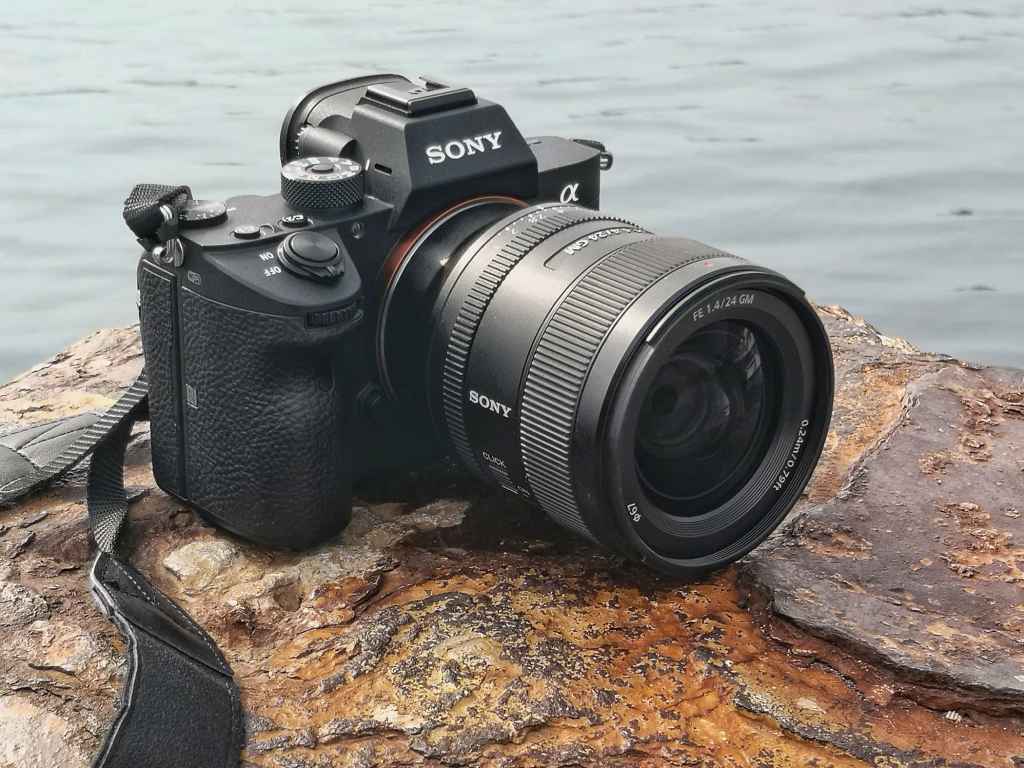
At a glance:
- Lens mount: Sony FE
- Aperture blades: 11
- Filter thread: 67mm
- Weight: 445g
- Price: $1,298 / £1,259
When your lens can open up to f/1.4, you know you’re going to have great flexibility in all types of shooting conditions, particularly low-light! The Sony FE 24mm f/1.4 GM is by no means a budget lens; however, for $1,400 / £1,300 you get a premium lens that is capable of delivering spectacular results.
The 11-blade circular aperture ring is also worthy of a mention, and with a minimum focusing distance of 0.24m, you can have a play around producing wide-angle bokeh shots. If used on an APS-C camera, then this lens gives a 36mm equivalent, but might feel a bit unbalanced with Sony’s A6000 series.
The Sony FE 24mm f/1.4 GM features two XA (extreme aspherical) elements that produce pin-sharp results and three ED (Extra-low Dispersion) glass elements that help suppress chromatic aberration. Thanks to Sony’s advances in technology, they have made a great lens that offers high quality while being relatively light and compact, making it ideal for the street genre.
Pros:
- 11-blade aperture
- Pin-sharp image quality
- Not too heavy (for a 24mm wide-angle lens)
Cons:
- Quite pricey
Take a look at our Sony FE 24mm f/1.4 GM sample images.
Best street lens for for Canon RF
Canon RF 50mm F1.2L USM
At a glance:
- Lens mount: Canon RF
- Aperture blades: 10
- Filter thread: 77mm
- Weight: 950g
- Price: $2,299 / £2,449
With fast, precise focusing thanks to the USM motor and a large f/1.2 aperture that positively drinks in light, the Canon RF 50mm F1.2L USM is a dream of a portrait lens – for those with the budget for it. As an ‘L’ lens, it’s part of Canon’s professional range, and as such commands a premium price. However, with astonishing sharpness delivered right the way to the corners of images, we’d say this is a lens that justifies the cost.
You’ll find more than a few professional photographers who proudly cop to this being the only lens they use on many shooting days, and it’s tailor-made to make the most of the spectacular sensors of full-frame EOS R cameras.
Granted, the price tag isn’t the only thing that’s heavy. Weighing in at almost a kilogram, this is a lens that you won’t forget you’re carrying any time soon. Ultimately though, in terms of quality and responsiveness, it’s a street photographer’s dream.
Pros:
- Luminous maximum aperture
- Terrific corner-to-corner sharpness
- Fast and responsive focusing
Cons:
- Heavy
- Expensive
Best street lens for Fujifilm X
Fujifilm XF 27mm f/2.8 R WR
At a glance:
- Lens Mount: Fujifilm X
- Aperture blades: 7
- Filter diameter: 39mm
- Weight: 84g
- Price: $399 / £399
Made for the best Fujifilm X-series mirrorless cameras, the Fujifilm XF 27mm f/2.8 lens has been designed to be small, light and discreet. Weighing in at a mere 84g, this lens is by far the lightest in our round-up, making it a strong contender for those who prioritise keeping weight and size to a minimum.
For traditionalists who like the old-school method of adjusting the aperture on the lens, the Fujifilm XF 27mm f/2.8 R WR has a nicely implemented aperture ring. Another handy feature is its weather-resistant construction, which gives you peace of mind when out on the streets, whatever the weather.
This lens is equivalent to a 40mm view on a full-frame camera, which is a good choice for street photography – wide enough to get in plenty of the scene without distorting lines or exaggerating perspective.
Pros:
- Lovely aperture ring
- Weatherproof
- Amazingly light
Cons:
- Other X-mount lenses offer better quality
Best street lens for Micro Four Thirds
Olympus M.Zuiko Digital ED 25mm F1.2 PRO
At a glance:
- Lens mount: Micro Four Thirds
- Filter diameter: 62mm
- Aperture blades: 9
- Weight: 410g
- Price: $1,400 / £1,199
We couldn’t possibly have a best street lens list without mentioning the Olympus M.Zuiko Digital ED 25mm F1.2 PRO! In our 5-star review, we found the top-end 25mm lens to be built to the highest standard of quality; it survived our rigorous testing that included a heavy autumnal rain shower.
It’s worth noting that the focus mechanism isn’t completely silent. However, the noise only really become noticeable in a quiet room, so you should be fine out in the street. The Olympus M.Zuiko Digital ED 25mm F1.2 PRO is fast and accurate to focus under many different shooting conditions.
Where this lens comes into its own, though, is at its largest aperture. Out of all our lenses on our list, this one goes the brightest to f/1.2. Although MFT might not seem like the obvious choice for producing beautiful bokeh and background blur, this lens does just that.
Pros:
- Hardily weather-sealed
- Large f/1.2 aperture
- Fast, accurate focusing
Cons:
- Focusing not completely silent
Read our Olympus M.Zuiko Digital ED 25mm F1.2 PRO review.
Best street lens for L-mount
Sigma 35mm f1.4 DG DN Art
At a glance:
- Lens mount: L-Mount, Sony E
- Aperture blades: 11
- Filter diameter: 67mm
- Weight: 645g (L-Mount) 640g (E-Mount)
- Price: $799 / £769
For L-mount, the Sigma 35mm f1.4 DG DN Art lens makes it onto our list. This lens is comfortably a 5 star product (you really can’t go wrong with a Sigma Art lens) and produces amazing bokeh thanks to its smooth 11 aperture blade ring.
We found in our review that although it’s a wide angle lens, the large aperture settings enable subjects to be easily separated from the background by selective focusing, which is great for street photography. The out-of-focus areas look nice and smooth, and there are no obvious aberrations.
This 645g lens is among the heavier examples on our list – however, the outstanding quality it produces far outweighs its weight issue! Shop around second-hand and you can get this lens for under $600 / £500, which is a great deal.
For DSLR shooters, the Sigma 35mm F1.4 DG HSM Art is the best equivalent.
Pros:
- 11-blade aperture
- Handy f/1.4
- Attractive-looking bokeh
Cons:
- Another hefty lens
Read our Sigma 35mm f1.4 DG DN Art review.
Best street lens for <strong>Sony E (APS-C)</strong>
Tamron 20-40mm f/2.8 Di III VXD
At a glance:
- Lens mount: Sony E mount
- Aperture blades:
- Filter diameter: 67mm
- Weight: 365g
- Price: $699 / £699
Here’s one of the recently released lenses that starts at 20mm and extends into ‘standard’ territory. The Tamron 20-40mm f/2.8 Di III XCD might be an unusual choice, as people tend to think of small primes for street photography. However, its zoom range and portability make it stand out, particularly for subjects such as landscape, architecture and travel.
In our review, we described it as a unique lens with a compelling blend of features: compact, lightweight, bright maximum aperture, and more than respectable image quality.
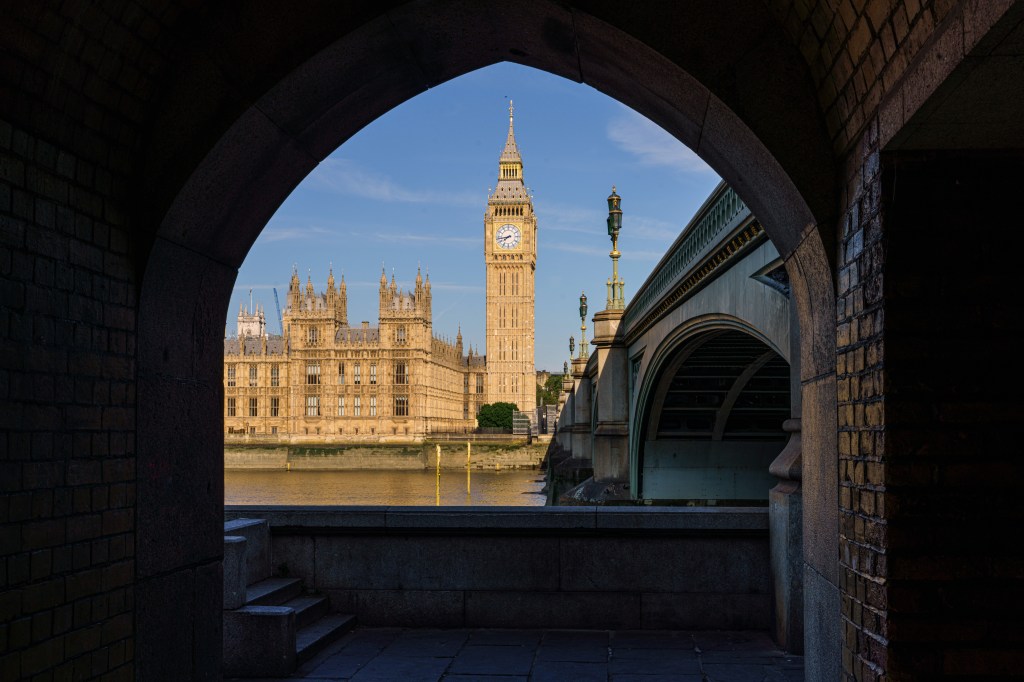
Pros:
- Compact and lightweight
- Very good image quality
- Bright maximum aperture
- Silent focusing
Cons:
- Not the fastest continuous autofocus
Read our Tamron 20-40mm F/2.8 Di III VXD review.
Best street lens for <strong>APS-C sensors</strong>
Sigma 30mm F1.4 DC DN
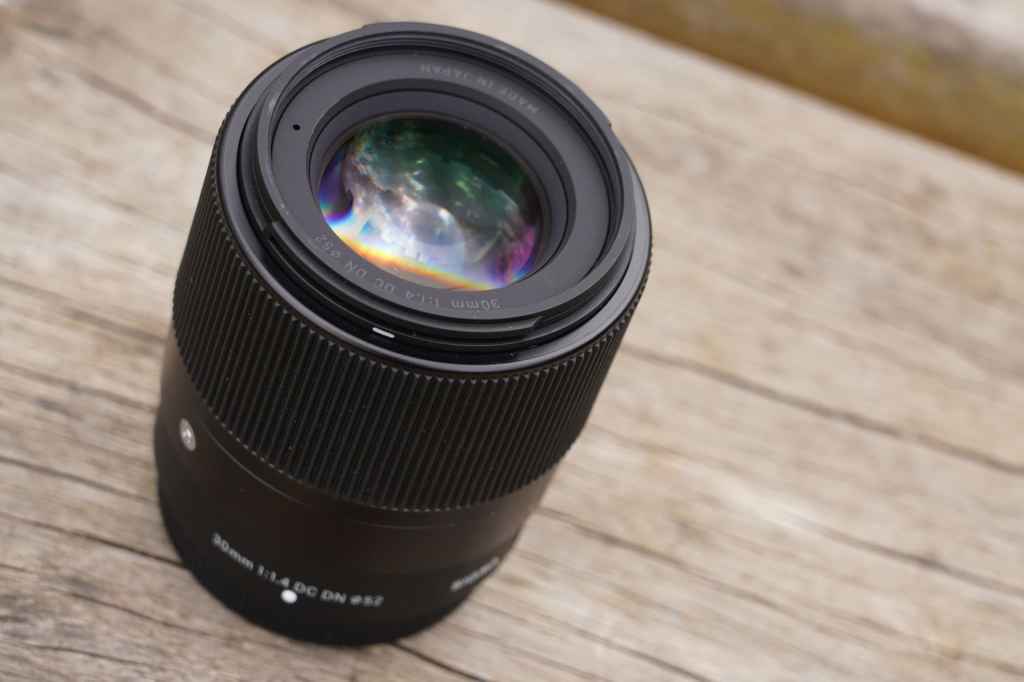
At a glance:
- Lens mount: Sony E, Canon EF-M, L-Mount, Fujifilm X, Micro Four Thirds
- Aperture blades: 9
- Filter diameter: 52mm
- Weight: 265g
- Price: $364 / £319
The Sigma 30mm F1.4 DC DN is a worthy contender for street photographers who use APS-C mirrorless and Micro Four Thirds cameras and are on a budget. In our review, we found it a reasonable size and weight, producing excellent image quality (going as bright as f/1.4), and having superior build quality – all at an affordable price point.
Used on an MFT camera, it has a 60mm equivalent field of view, and around a 45mm equivalent on a Sony E-mount, Fujifilm X-Mount, or L-Mount camera with an APS-C-sized sensor, and 48mm on Canon’s EF-M cameras.
With a retail price of around $300 / £300, it is hard to really fault this lens. Sharp images at f/1.4 and edge-to-edge sharpness when stopped down make this lens very appealing, and a useful addition for any street photographer on a budget.
Pros:
- Very good value for money
- Sharp even wide open
- Available for lots of mounts
Cons:
- A little narrow for street on MFT
Read our Sigma 30mm f/1.4 DC DN Contemporary review.
Best street lens for <strong><strong>L-Mount and Sony E-Mount</strong></strong>
Sigma 17mm F4 DG DN Contemporary
At a glance:
- Aperture blades: 7
- Filter thread: 55mm
- Dimensions and weight: 64×48.8mm, 225g
- 12 cm minimum focus
- Price: $589 (E-Mount), $599 (L-Mount) / £509
Like the other Sigma I Series lenses, the 17mm is designed for full frame mirrorless cameras, and is offered in L-Mount and for Sony E-Mount bodies. Sigma designed this for landscapers and street photographers: its small size and light weight make it portable. Even more impressive given its size is its 103.7° angle of view.
Sigma has used two Super Low Dispersion (SLD) elements and three aspherical elements in the 9-element design. These help to keep the unit small while at the same time tackling chromatic separation and general resolution. The iris uses a slightly unexciting 7 blades to form the aperture, which can close to f/22. Other models in the I Series tend to have f/2 or f/2.8 maximum apertures, but to keep this wide angle to similar size, a smaller maximum aperture was required.
Pros
- Super wide angle of view
- Small for the focal length
- Lightweight
- Very nicely made
- Good price
Cons
- Restricted maximum aperture
- Limited weather sealing
Read our Sigma 17mm F4 DG DN Contemporary Review
Best cheap mirrorless lenses for street photography
One of the best aspects of street photography is that you don’t need loads of gear to get started – all you really need is a camera and a lens. It’s a great pursuit for the photographer on a budget, and as such, we’ve compiled a selection of our favourite cheap street photography lenses for mirrorless systems. If you liked the look of some of the lenses in the previous section but were put off by the prices, this section should help you.
Micro Four Thirds: Panasonic Lumix G 25mm f/1.7 Asph
At a glance:
- Mount: Micro Four Thirds
- Diaphragm blades: 7
- Filter size: 46mm
- Weight: 125g
- Price: $248 / £149
Fair enough, not everyone can stretch to the kind of budget required for the Olympus M.Zuiko Digital ED 25mm F1.2 PRO. If you’re a Micro Four Thirds user looking for a similar lens that’s a bit more affordable, we can happily recommend the superb little Panasonic Lumix G 25mm f/1.7 Asph. We tested it on Panasonic and Olympus cameras with no problems – it’s an accomplished lens that focuses nicely and quickly on any MFT body.
In terms of image quality, the Lumix G 25mm f/1.7 Asph hugely impresses for the price. For sharpest results, you’re best off around f/4-f/5.6, though it’ll only be a concern for real pixel-peepers – wide-open f/1.7 results are more than acceptable. Be aware when shooting straight into the light though, as we did encounter strong veiling flare covering the frame in these situations. Not unusual for fast primes, but worth knowing.

Street photographers will appreciate the unobtrusive dimensions of this tiny lens, as well as its silent focusing. You can get better optical quality if you spend more, naturally. But this lens is an absolute diamond for its price. What’s more, if you buy used you might be able to knock around $50 / £50 off the ticket price. At that, it’s frankly an absolute steal.
Pros:
- Incredible value for money
- Tiny and unobtrusive
- Fast, silent focusing
Cons:
- Pronounced flare when shooting into the light
- Raw image quality inevitably lags behind expensive peers
Read our Panasonic Lumix G 25mm f/1.7 Asph review.
For Sony FE: Sony Sonnar T* FE 35mm F2.8 ZA
At a glance:
- Mount: Sony E (FE)
- Diaphragm blades: 7
- Filter size: 49mm
- Weight: 120g
- Price: $598 / £629
The Sony Sonnar T* FE 35mm F2.8 ZA lens has been made with the street photographer in mind, and comes with many appealing features such as a 120g lightweight design and anti-reflective coating that minimises unwanted lens flare. It almost qualifies as a pancake lens as it is so small!
The lens is fast to react and accurate to focus, which is ideal when shooting any type of street scene. Although, compared to others on the list, the 7-blade aperture construction is slightly disappointing. However, this is to be expected, as you don’t get a lens this small and light without some compromise.
The 35mm view on a full-frame camera will appeal to traditional street photographers. Also, for those with an E-mount APS-C mirrorless camera, the lens provides an equivalent 52.5mm view, which is equally as good for many street photographers.
Pros:
- Great value
- 120g weight
- Anti-reflective coatings
Cons:
- Only 7-blade aperture
For Canon RF: Canon RF 50mm F1.8 STM
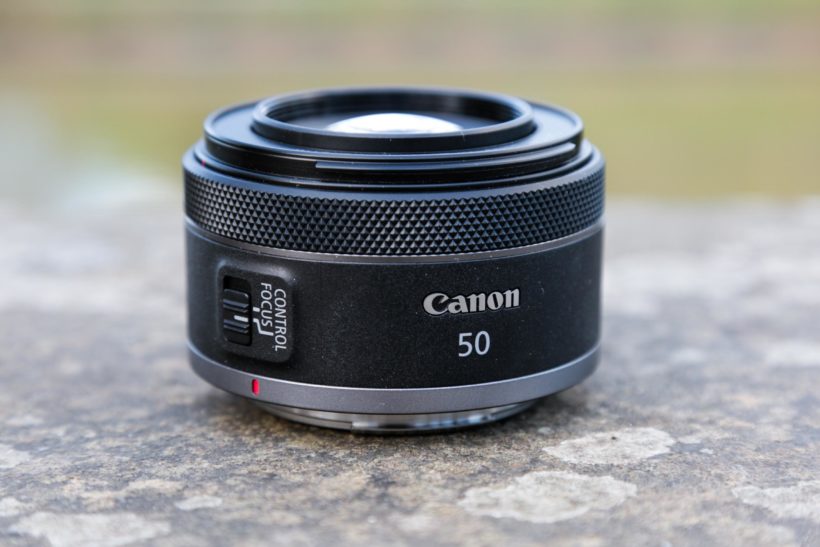
At a glance
- Lens Mount: Canon RF-mount
- Aperture blades: 7
- Filter diameter: 43mm
- Weight: 160g
- Price: $199 / £209
When it comes to street photography, many photographers like to shoot wide. However, a nifty fifty is a great choice for those who like to stand back from the action yet not appear too far away from their subject. It produces a fairly naturalistic-looking image, with a field of view roughly equivalent to that of the human eye. Many pro photographers keep a 50mm within easy reach in their kit bag at all times, and you could quite easily spend an entire day happily street-shooting with one
The Canon RF 50mm F1.8 STM lens is an affordable, reliable choice for Canon mirrorless shooters. In our review, we found this particular lens to produce excellent image quality for a lens at this price point, while also adding little weight to our EOS R camera body – it weighs a minuscule 160g! Ideal for street photography, it’s a natural successor to Canon’s EF-mount 50mm f/1.8 lens, which is worth picking up if you’re using Canon DSLRs rather than mirrorless.
Pros:
- Very affordable
- Naturalistic perspective
- Incredibly light
Cons:
- Soft corners at large apertures
Read our Canon RF 50mm F1.8 STM review.
Best street photography lenses for DSLRs
While DSLRs are a bit bulkier and generally slower than mirrorless systems, they still have their place in street photography, and there’s no reason you can’t produce great street images on a DSLR setup. In this section, we’ve compiled a few of our favourite DSLR
For DSLRs: Sigma 40mm f/1.4 DG HSM Art

At a glance:
- Lens mount: Canon EF, Nikon F, Sony E, L-mount
- Aperture blades: 9
- Filter thread: 82mm
- Weight: 1,200g
- Price: $829 / £746
While this is one of our favourite DSLR lenses, also making an appearance in our guide to the best Canon EF lenses, it’s available for E-mount and L-mount mirrorless systems too. As one of Sigma’s ‘Art’ lenses, its pitch is peerless optical quality, with top-notch distortion control. It’s designed to be a match for high-resolution sensors like that of the Canon EOS 5DS R, or more recently the Sony A7R V, where the pixels really matter. And it passes that test with flying colours.
The 40mm focal length is something of an unsung hero in street photography – you don’t always see it talked about, and lenses hitting this length are rarer. But it provides a more naturalistic view than 35mm while putting a little more of the scene in play than 50mm, so there’s plenty to recommend it. While you’ll need to keep both hands on the setup when using this lens, as its weight exceeds 1.2kg, if you’re up for a little hefting, the quality and responsiveness are first-rate.
The price has come down too. On release this lens had a four-figure price tag, but these days it can be picked up new for around £634 / $799, and used for even less than that.
Pros:
- Price has come down nicely
- Street-friendly focal length
- Optical quality meets demands of high-res sensors
Cons:
- Big and hefty
Read our Sigma 40mm f/1.4 DG HSM Art review.
For Nikon F-mount: Nikon AF-S NIKKOR 28mm f/1.4E ED
At a glance:
- Lens mount: Nikon FX, DX
- Aperture blades: 9
- Filter thread: 77mm
- Weight: 645g
- Price: $1,397 / £1,999
The Nikon AF-S NIKKOR 28mm f/1.4E ED is a wonderful lens that produces incredible results and even has pinpoint accuracy at f/1.4. We admit this lens is not as discreet compared with others on our list, and is rather heavy (645g is not lightweight, though it’s just over half the weight of the Sigma above), however, it’s still worth considering if you value image quality above size and weight.
With the move of many photographers to mirrorless cameras, lenses like this are coming up more and more on the second-hand market. If you shop around you can pick up one for just over £1000, which, while still not cheap, is far more affordable than the full retail price. You get plenty of good quality glass for your money.
Pros:
- Gorgeous image quality
- Excellent at f/1.4
Cons:
- Heavy
- Expensive
How to choose a lens for street photography
So what are the main criteria for a street photography lens? The key things to focus on are: focal length, aperture range, aperture blades and physical size and weight. Below we’ve put together some more information on what you might want from a street lens.
Prime vs zoom: There are two main types of lenses on the market. A prime lens, which has a fixed focal length (for example 50mm), and a zoom lens, which has a variable focal range (for example 24-70mm). A zoom lens provides more versatility, but will tend to be heavier, longer, pricier (if high quality) and less discreet. That’s why we tick to prime lenses in our guide, as these are generally lighter, smaller, and are able to open to much wider aperture settings (without having to break the bank). For more on prime vs zoom, have a look at our guide to prime vs zoom lenses.
Pancake lenses: If having a small lightweight lens is top of your list, then consider a pancake lens ie a lens that is almost flat – like a pancake! This means they’re naturally light and portable; the disadvantage is they often don’t offer as bright an aperture as a standard prime lens (a pancake lens is more likely to be f/2.8 than a larger lens of equivalent focal length, which may be an f/1.8 or f/1.4), and the image quality is not usually as good as that from a larger lens.
Focal length: The next aspect to consider is the focal length of your lens. In street photography, you ideally want your lens to capture as much of the scene as possible, without going so wide that it distorts. For this reason, a 35mm lens is a popular choice (on full frame – on crop sensor APS-C cameras, a 23/24mm will equate to the same). However, there are times where a wider 24mm view or a narrower 50mm view can be desirable, and some manufacturers also offer 40mm lenses. Personal preference matters here.
Aperture: The aperture range of your lens is key for street photography. Ideally, the brighter your lens can go, the better, and at the very minimum you want your lens to open up to at least f/2.8. If producing beautiful bokeh in shallow depth of field is high on your priority list, also look at the aperture blade construction. Generally speaking, the more aperture blades a lens has, the better the bokeh circle, but pay attention to whether the lens mentions a circular or rounded aperture blade in the specifications.
DSLR or mirrorless: Many photographers have switched to a mirrorless camera system now, but it’s useful to note that many DSLR lenses can be used on a mirrorless system with the right adapter. However, it doesn’t work the other way round – i.e. you can’t use a mirrorless lens on a DSLR. If you’re wanting to know more on DSLR vs Mirrorless have a look at our guide to DSLR vs Mirrorless cameras.
Does it fit? Finally, ensure that the lens you buy has the correct mount for your camera. Every camera has a specific lens mount, and will only take lenses designed for that mount. Nikon DSLRs, for example, use the F-mount, so you will need Nikon F-mount lenses. There are adapters that allow cross-using of different lenses and cameras, but these cost extra, and in some cases prohibit the use of electronic functions like autofocus and stabilisation.
There are many different types of cameras out there – DSLRs, mirrorless, full frame, crop sensor, all of them have different requirements. Many full-frame lenses can also be used on the crop sensor cameras but check before you buy. Also remember that third party lens companies produce lenses for cameras across the industry so double check that it fits your camera before you buy!
Top tip! Save some money by buying second hand. If you buy second hand from a trusted dealer the lenses have been checked and often come with a warranty.
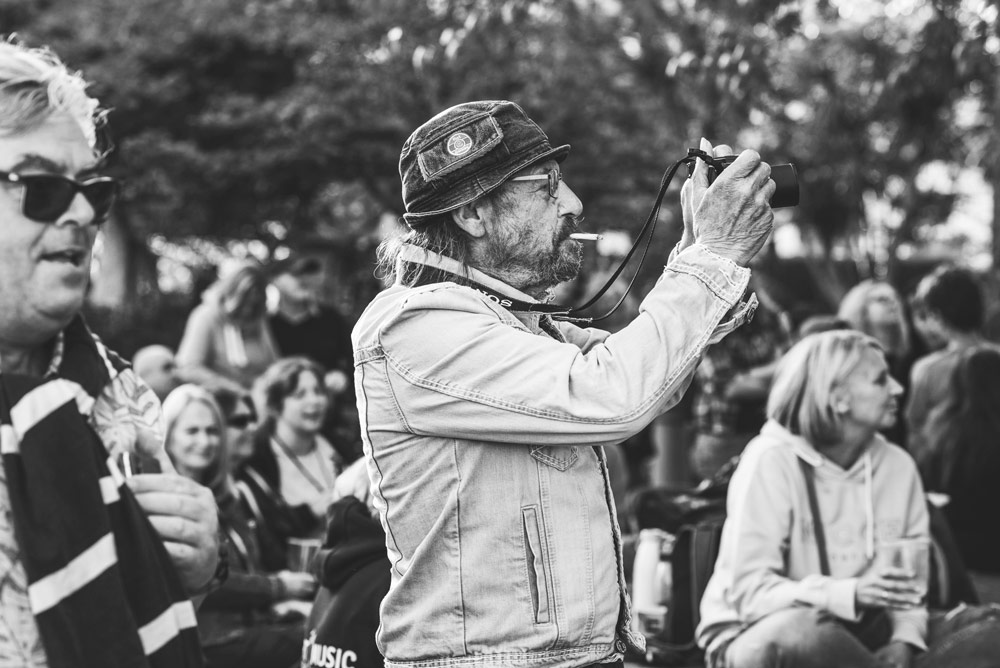
Related articles:
- Best camera for street photography
- Using smartphones for street photography
- Best budget portrait lenses
- Complete guide to street photography
- Guide to the best camera brands for JPEGs
- Latest lens reviews
How we test lenses
We review lenses from the perspective of choosing one for its photography and video performance, so we test every lens for all aspects of image quality: sharpness, contrast, background blur and bokeh, as well as other image qualities pertinent to assessing a lens type. We look for optical flaws such as chromatic aberration and distortion. We test focus performance for both accuracy and speed (in different lighting conditions), as well as how the lens delivers or renders images. This is tested in a range of shooting scenarios designed to expose lens characteristics, but we also examine how it performs in real world use in diverse shooting situations.
Beyond the pure optical performance of the lens, we assess the lens’ physical qualities, such as its design, build quality, ease of handling, and whether it offers any unique or interesting features worth mention. Beyond image quality certain lenses can be assessed for how they make you feel, or how they may affect a camera system set-up for portability, compactness, weight etc.




